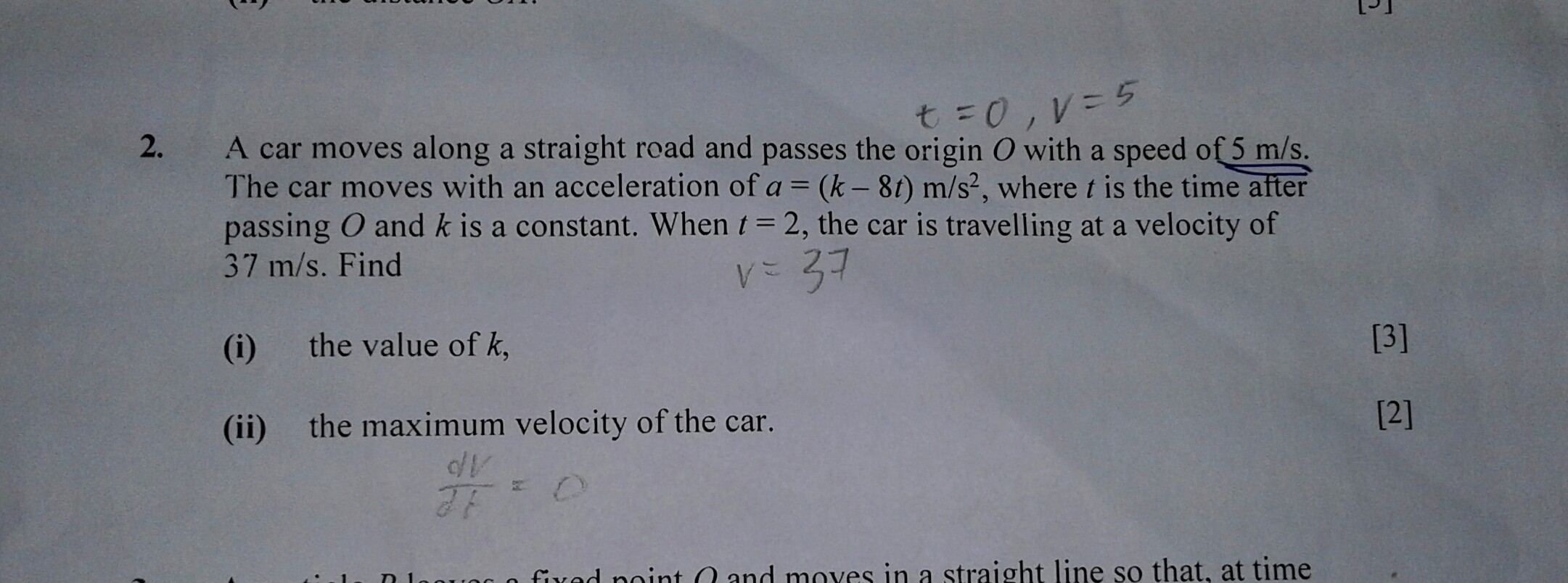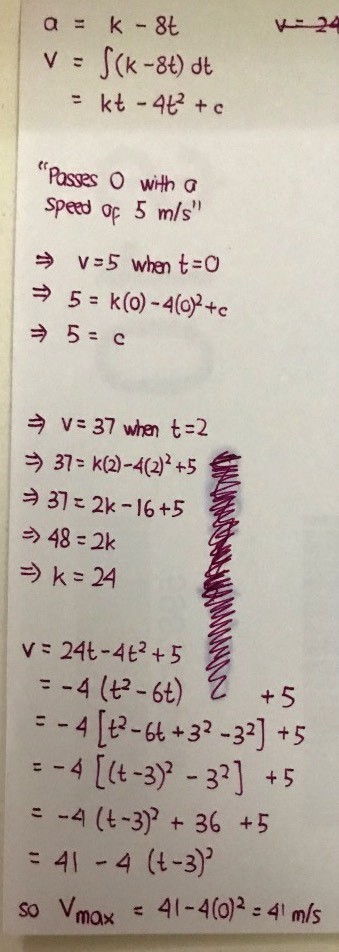Ask Singapore Homework?
Upload a photo of a Singapore homework and someone will email you the solution for free.

See 1 Answer
done
{{ upvoteCount }} Upvotes
clear
{{ downvoteCount * -1 }} Downvotes
Good morning Irah! Here are my workings for this question.
Date Posted:
3 years ago
(ah yes...so I was correct for the first part.) Thank you, Mr Eric! :)
But for the second part, is there another approach to tackle this question?
Good morning Irah!
An alternative approach for this is to think of v as a function of t (something like y is a function of x).
v = 24t - 4t² + 5
When the v is at a maximum (just like when y is a maximum,
dv/dt = 0 (just like dy/dx = 0)
(But a = dv/dt so this is essentially zero acceleration)
24 - 8t = 0
-8t = -24
t = 3
(To prove maximum, we just differentiate dv/dt to get a fixed value of -8 which is less than zero so the second derivative test suggests a maximum value)
When t = 3, we get our maximum velocity of
24 (3) - 4 (3)² + 5
= 72 - 36 + 5
= 41 m/s
An alternative approach for this is to think of v as a function of t (something like y is a function of x).
v = 24t - 4t² + 5
When the v is at a maximum (just like when y is a maximum,
dv/dt = 0 (just like dy/dx = 0)
(But a = dv/dt so this is essentially zero acceleration)
24 - 8t = 0
-8t = -24
t = 3
(To prove maximum, we just differentiate dv/dt to get a fixed value of -8 which is less than zero so the second derivative test suggests a maximum value)
When t = 3, we get our maximum velocity of
24 (3) - 4 (3)² + 5
= 72 - 36 + 5
= 41 m/s





